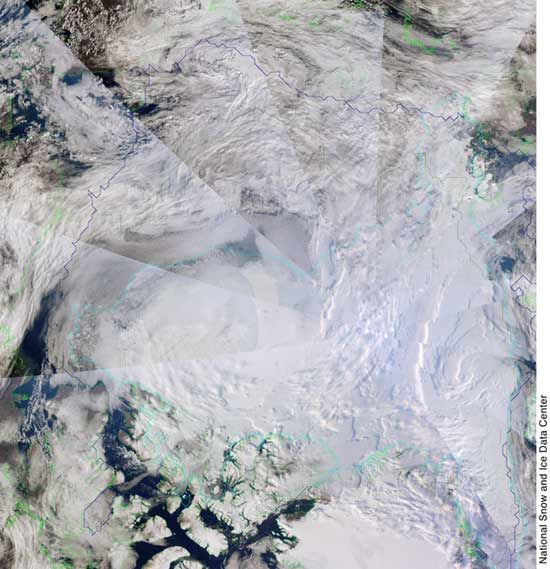Record Low Arctic Sea Ice Confirmed

Arctic sea ice plummeted to the lowest levels seen in the last 30 years, shattering all previous record lows, scientists announced today after completing a full review of the entire melt season.
The average sea ice extent for this September (typically the month when sea ice reaches its lowest extent) was only 1.65 million square miles (4.28 million square kilometers)—23 percent lower than the previous record low set in September 2005, the National Snow and Ice Data Center (NSIDC) said.
A preliminary assessment last month indicated that Sept. 16 would be the date of minimum ice extent this year and that it was lower than the average of the last thirty years.
At the end of this melt season, which runs through the summer months, sea ice was 39 percent below the long-term average from 1979 to 2000 (the period that satellites have been keeping measurements of sea ice extent).
Ice extent reached such a low that the fabled Northwest Passage completely opened for the first time in human memory. When ship and aircraft records are taken into account, sea ice may have fallen by as much as 50 percent since the 1950s, the NSIDC said.
The melt also lasted longer this year, with the minimum date set at Sept. 16, whereas the average minimum date since 1979 is Sept. 12. Ice typically begins building with temperature declines after the minimum date.
Earth's rising temperatures are attributed as the cause of the increasing melting.
Sign up for the Live Science daily newsletter now
Get the world’s most fascinating discoveries delivered straight to your inbox.
"Computer projections have consistently shown that as global temperatures rise, the sea ice cover will begin to shrink," said Mark Serreze of the NSIDC. "While a number of natural factors have certainly contributed to the overall decline of sea ice, the effects of greenhouse warming are now coming through loud and clear."
One reason the sea ice reached such a low extent this summer was it was already in a weakened state, with less total, and thinner, ice than normal.
"Thinner ice takes less energy to melt than thicker ice, so the stage was set for low levels of sea ice this summer," said Julienne Stroeve, also of the NSIDC.
Persistent high atmospheric pressures kept skies clear and sunny over the Arctic this summer, which also promoted strong melt. High winds from the weather pattern also pumped in warmer air.
Serreze says that this pattern of increasing melt does not bode well for the long-term survival of Arctic sea ice (and the animals, plants and people who depend upon it).
“The sea ice cover is in a downward spiral and may have passed the point of no return," Serreze said. "As the years go by, we are losing more and more ice in summer, and growing back less and less ice in winter. We may well see an ice-free Arctic Ocean in summer within our lifetimes.”
- Top 10 Surprising Results of Global Warming
- Multiple Studies Reveal Dire Meltdown in Arctic
- North vs. South Poles: 10 Wild Differences

Andrea Thompson is an associate editor at Scientific American, where she covers sustainability, energy and the environment. Prior to that, she was a senior writer covering climate science at Climate Central and a reporter and editor at Live Science, where she primarily covered Earth science and the environment. She holds a graduate degree in science health and environmental reporting from New York University, as well as a bachelor of science and and masters of science in atmospheric chemistry from the Georgia Institute of Technology.











